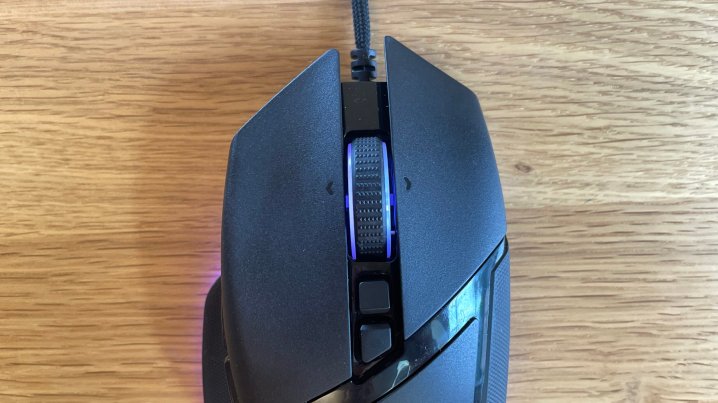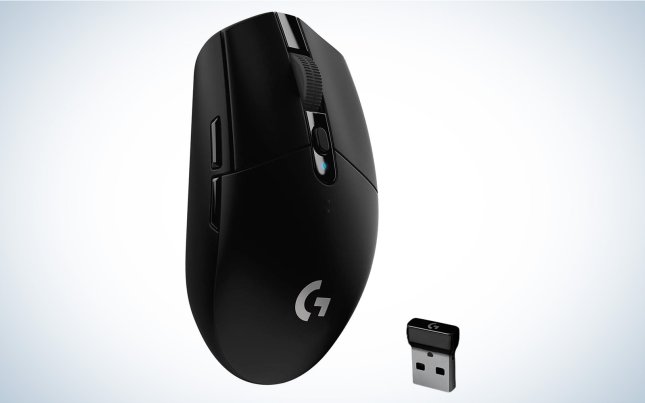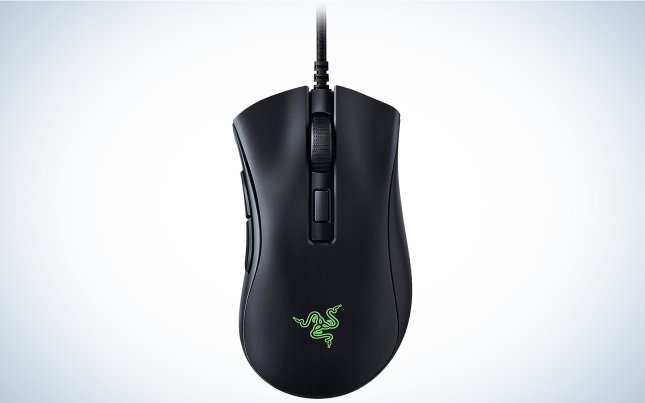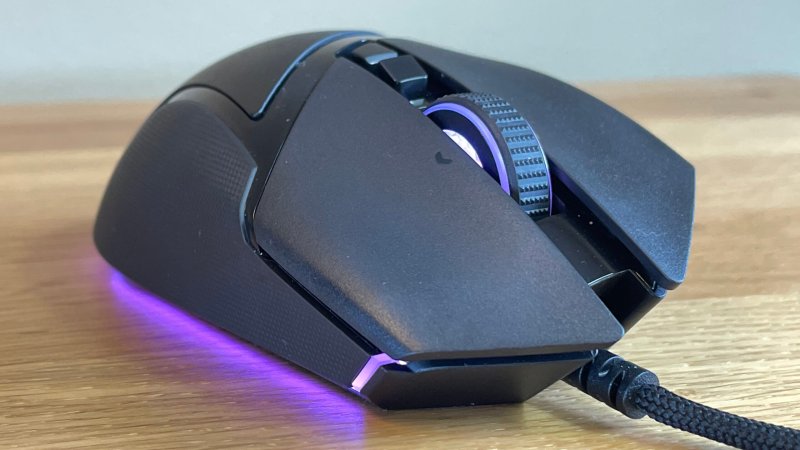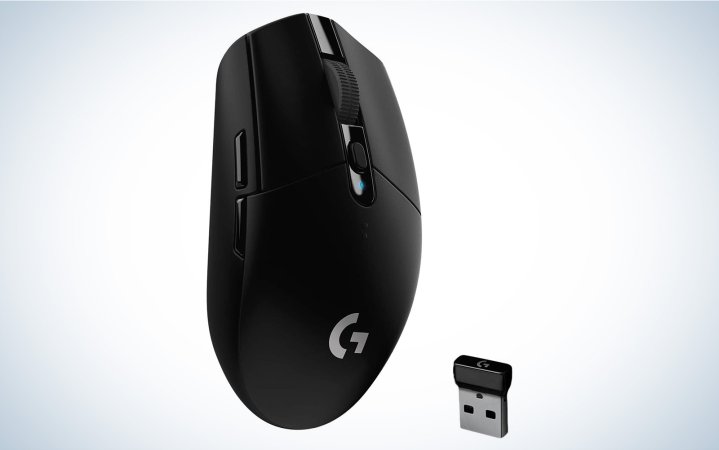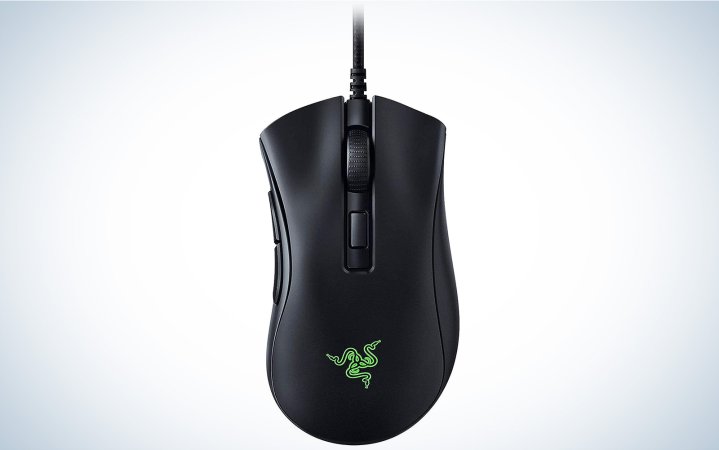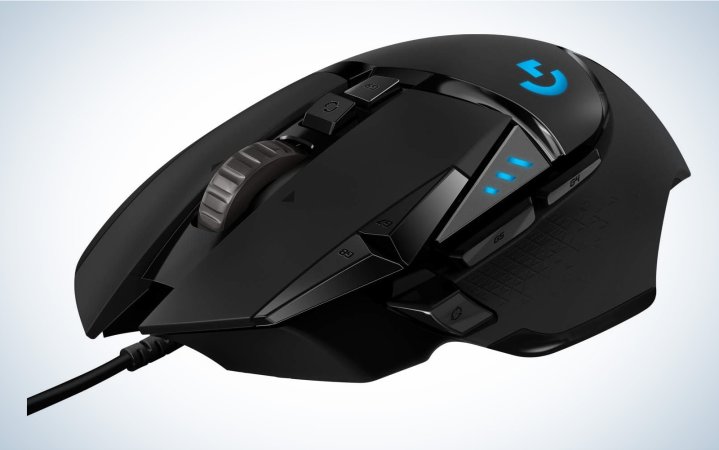We may earn revenue from the products available on this page and participate in affiliate programs. Learn more ›
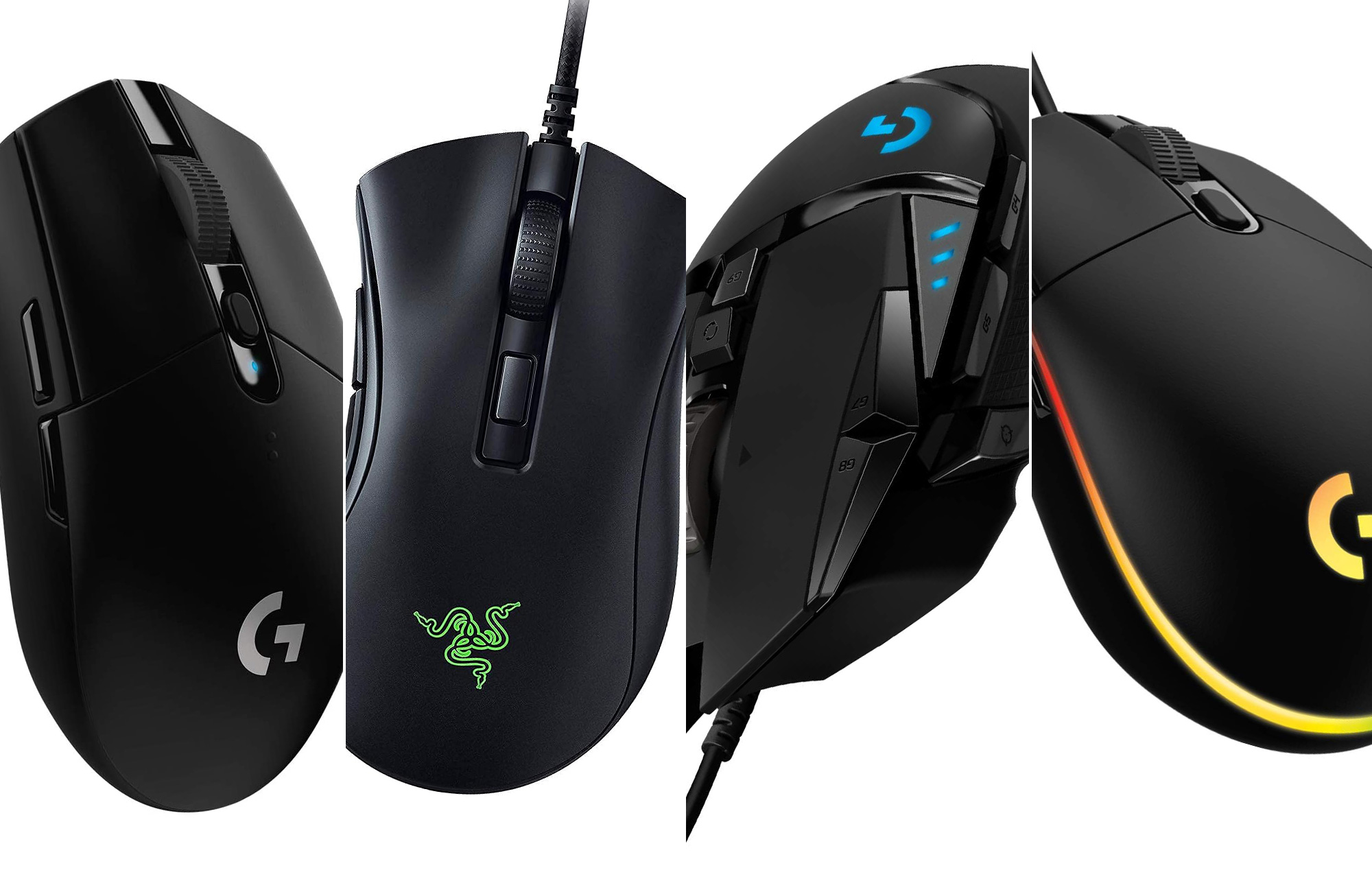
In the PC gaming world, a bad cheap gaming mouse can sabotage your entire system. A worthy input device should deliver precision, customization, and comfort. While the allure of high-end gaming mice can be tempting for their various bells and whistles, they can get expensive. Fortunately, there are several excellent options for gamers on a budget. A great gaming mouse combines next-level sensitivity, responsiveness, and ergonomic design, providing you with an edge while playing fast-twitch titles like Call of Duty: Warzone. Most importantly, these models offer unwavering reliability and outperform productivity-oriented mice in gaming. Whether you’re a casual gamer or boot up daily, the best cheap gaming mouse is your ticket to leveling up your gaming performance.
- Best overall: Razer Basilisk V3
- Best wireless: Logitech G305
- Best lightweight: Razer DeathAdder V2 Mini
- Best basic: Logitech G203
- Best customizability: Logitech G502 HERO
How we chose the best cheap gaming mouse
I’ve been an avid PC gamer for nearly 20 years, starting with the early aughts of Counter-Strike. Over the years, I’ve used dozens of gaming mice to secure victory, giving me insight into what works and what doesn’t. I’ve also written about computers and peripherals for over a decade on sites like Popular Science, Popular Mechanics, and Reviewed. To find the best cheap gaming mouse, I combined my experience testing products with prior coverage from experts at Popular Science. I then selected the individual picks based on third-party reviews and consumer feedback.
What is considered “cheap”
There are dozens of gaming mice to choose from at varying price points. So, what is considered cheap? Ideally, we wanted our picks to be as affordable as possible while balancing performance and features. Our research discovered that the best options for this list cost $30 to $80. It may be possible to find the picks on this list—or even more expensive models—at lower prices during major events like Prime Day or Black Friday. Finding a decent gaming mouse for under $30 is possible. Still, we don’t recommend going too cheap because your gaming mouse may offer limited features, poor build quality, and be less responsive. It’s not a deal if it doesn’t perform its intended purpose. With one of our picks, however, you’ll get a great mouse and have money left over for a cheap gaming PC and other peripherals like a gaming keyboard or high-end monitor.
The best cheap gaming mouse: Reviews & Recommendations
Whether you play RPGs, strategy games, or first-person shooters, the right gaming mouse can be the difference between victory and defeat. Alongside a proper gaming keyboard, an effective mouse is essential for controlling what’s happening on screen. The good news is many of the most well-known brands—including Razor, Logitech, and Corsair—offer affordable gaming mice with comparable precision, ergonomics, and customization to more expensive models. We compiled a list of the best cheap gaming mice for all users, whether you need something with programmable buttons, high sensitivity, or wireless connectivity.
Best overall: Razer Basilisk V3
Best overall
Razer Basilisk V3
Pros
- Deep customization
- Ergonomic design
- RGB lighting zones
Cons
- Hard to travel with
- The amount of customization may feel overwhelming to beginners
Specs
- DPI: 26,000
- Programmable Buttons: 11
- Sensor: Optical
- Weight: 3.56 ounces
We previously sang the praises of the Razer Basilisk V2, and we have nothing but good things to say about the Basilisk V3. The gaming mouse is teeming with features: 11 customizable buttons, a max DPI of 26,000, and a scroll wheel with a grippy texture. Every button on Razer’s mouse has a satisfying click, with a lifetime rating of 70 million clicks.
Meanwhile, Razer’s Synapse software allows you to control everything from lighting to sensitivity and polling rate. Plus, it features a comfortable, ergonomic design with a thumb rest so you can game for hours without your hand fatiguing. The Basilisk V3 retails for $69.99 but is often on sale for as much as 29 percent off, bringing the price down to $49.99. Considering what you get, Razer’s mouse is fantastic value for the money.
Best wireless: Logitech G305
Best wireless
Logitech G305
Pros
- Available in several colors
- Excellent battery life
- Ambidextrous design
Cons
- A little small for larger hands
- Battery isn’t rechargeable
Specs
- DPI: 12,000
- Programmable Buttons: 6
- Sensor: Optical
- Weight: 3.40 ounces
Wireless gaming mice are generally more expensive, but the Logitech G305 is a welcome exception. It makes an immediate impression by offering an ambidextrous design that’s comfortable for most hand sizes. Two programmable side buttons add customizability, and the sensitivity settings reach a respectable 12,000 DPI. You also get built-in storage for the included USB wireless receiver, making it easy to take the gaming mouse on trips. The G305 uses a replaceable AA battery that promises up to 250 hours of continuous gameplay, according to Logitech. The mouse is also compatible with PC and Mac, making switching from one platform to another easy.
Best lightweight: Razer DeathAdder V2 Mini
Best lightweight
Razer DeathAdder V2 Mini
Pros
- Very light
- Six programmable buttons despite its smaller size
- Customizable RGB lighting
Cons
- May be too small for larger hands
Specs
- DPI: 8,500
- Programmable Buttons: 6
- Sensor: Optical
- Weight: 2.19 ounces
The Razer DeathAdder V2 Mini is—surprise—a smaller version of the excellent DeathAdder V2. The low-click latency and lightweight design make it an ideal option for first-person shooters. The optical sensor features a sensitivity of up to 8,500 DPI, which you can adjust on the fly thanks to customizable buttons. There are six programmable buttons and support for customizable RGB lighting, which you can sync with your gameplay. The DeathAdder V2 Mini also features textured left- and right-click buttons and a drag-free cord, giving you performance comparable to a wireless mouse.
Best basic: Logitech G203
Best basic
Logitech G203
Pros
- Affordable
- Customizable RGB lighting
- Ambidextrous design
Cons
- On the heavier side
- Inflexible cable
Specs
- DPI: 8,000
- Programmable Buttons: 6
- Sensor: Optical
- Weight: 4.8 ounces
Basic doesn’t mean bad. In this case, the Logitech G203 is quite good. The mouse offers a similar design and functionality to the Logitech G305. Still, this model is wired and offers RGB Lightsync support, allowing you to customize and sync the RGB lighting with your gameplay. You also get a classic six-button layout, a spring button tensioning system, and a sensitivity of up to 8,000 DPI. The mouse has four color options to match your setup and is compatible with Windows and Mac. You get all this for a very affordable price, with regular sales that bring the price down even more.
Best customizability: Logitech G502 HERO
Best customizability
Logitech G502
Pros
- Adjustable weight
- Several customizable buttons
- Flawless tracking and performance
Cons
- On the narrow side
- Side grips don’t offer enough traction
Specs
- DPI: 16,00
- Programmable Buttons: 11
- Sensor: Optical
- Weight: 4.3 ounces
Featuring a sharp, angular design and tons of customization, Logitech’s G502 Hero is the most versatile cheap gaming mouse available. The gaming mouse offers five programmable buttons (11 total) around the thumb rest and left-click button alone, allowing you to execute customizable settings quickly. You also get flawless performance with a DPI range from 100 to 16,000 and a 1ms response time. These specs mean the mouse will more than keep up with fast-twitch titles like Fortnite. The mouse also allows you to add more weight to achieve the most comfortable balance that works for you. While the gaming mouse is on the higher end of the “cheap” scale, you can find it for under $40 with the right sale.
Things to consider when buying a cheap gaming mouse
The gaming mouse you pick should be comfortable, accurate, and customizable—features that allow you to effortlessly and precisely control what’s occurring on screen. That said, before jumping into your favorite game, there’s a lot to consider. Everything from the mouse’s design, sensor type, and dots per inch affects your overall experience. More importantly, understanding these features will help you pick the gaming mouse that provides you with an almost preternatural connection between you and your games.
Comfort
Your mouse won’t be enjoyable to use if it’s not comfortable. Of course, this criteria is somewhat subjective as comfort can vary from person to person. If possible, we recommend trying out the gaming mouse you want before purchasing it, whether in a store or a friend’s house. As you try it out, consider the mouse’s size and how it contours to the shape of your hand. Gaming mice are often designed for a specific grip style (palm, claw, and fingertip), so choose one that matches your natural grip.
Meanwhile, consider its weight and balance. Do you like something heavier? Or do you prefer a lightweight mouse? Finding the most comfortable gaming mouse will likely require trial and error. Remember, you’ll use your gaming mouse daily, so make sure it meets your comfort expectations.
Buttons and customization
Left- and right-click buttons are standard on all gaming mice, but the number of additional buttons varies. The best gaming mice offer extra buttons near the thumb, in the middle by your index finger, and in the click wheel. These additional buttons must be in a comfortable spot to click easily, but not so easily that you click them by mistake. Gaming mice generally have approximately five buttons—a good number for beginners. Some more expensive models can have 10+ buttons, which may be overwhelming depending on your experience level.
The additional buttons are only helpful if you can customize them to perform a specific action. If you want customization, make sure the gaming mouse you choose offers a configuration app designed by the manufacturer. This will allow you to customize what each button does, whether changing your mouse’s DPI (dots per inch) on the fly or launching an app. You can also assign what your mouse’s buttons do in the game settings you’re playing. There’s no perfect amount of buttons for a gaming mouse, so the choice ultimately comes down to your preferences and the type of games you play.
Sensor and dots per inch
Most modern gaming mice feature an optical sensor on the bottom, though some models come equipped with a laser sensor. An optical sensor uses a small LED and a photo sensor to detect changes in the surface underneath your mouse, translating that into the cursor’s movement. Laser sensors use laser technology to track movement on a broader range of surfaces, including glass.
While optical sensors may struggle on certain surfaces, they are generally very accurate and typically don’t suffer from acceleration issues, which is when the mouse can lose track of the cursor if moved too quickly. On the other hand, laser sensors can suffer from cursor jitter and acceleration issues, making them less ideal for games with fast-moving action.
When gaming, a more “powerful” sensor can offer customizable tracking by adjusting the mouse’s sensitivity to movement. Sensitivity is measured in dots per inch, which tells you how many pixels your cursor will span when you move your mouse 1 inch. Most gaming mice allow you to increase or decrease the DPI, giving you precise control over the sensitivity. The ideal DPI depends on your preferences and the game you’re playing. A lower DPI can be helpful for precise aiming, while a higher DPI may be preferred during general gameplay.
Wired vs. Wireless
Gamers traditionally opt for a wired mouse because of the reliability it provides. A wired connection offers guaranteed stability, less input lag, and immunity to wireless interference from other devices. You also don’t need to worry about charging or replacing any batteries. That said, a wired mouse can limit portability and range of motion. And if you appreciate a clean, minimal setup, a wired mouse’s cable can get in the way.
While gamers still prefer wired mice, wireless models are more advanced than ever and can offer a comparable experience. The most significant benefit of a wireless mouse is the flexibility to take it anywhere. If you have a gaming laptop, owning a wireless mouse can be convenient if you’re constantly on the go.
However, despite making strides toward reducing latency, wireless mice may still encounter a slight delay, which can be a considerable concern when playing competitive games. Wireless mice also require you to monitor the battery life, and they can be more expensive due to the added technology. The best wireless mice generally connect to your computer via a 2.4GHz wireless dongle, which requires a USB connection.
FAQs
We recommend a wired model for the sake of affordability. Wired mice offer a more straightforward design that doesn’t require batteries or wireless components, keeping the cost lower. And there are simply more wired options available, so there’s a better chance of finding one that fits your needs.
Ultimately, it comes down to your preferences. Even though a wired mouse is more affordable and offers better stability, you may prefer that a wireless mouse gives you greater freedom of movement and the convenience of no cables. The type of game you play and how often you play can also determine whether you should get a wired or wireless gaming mouse.
Like choosing a wired or wireless gaming mouse, this question comes down to your needs. If you have the budget, spending more on a high-end model can mean your mouse offers more advanced sensors, lower latency, and customizable features, giving you a competitive edge. However, casual gamers may not need the most cutting-edge model; a budget-friendly option can be perfectly adequate. If you find a model that offers the features you want and is comfortable to use, the price may not be a secondary factor in your final decision.
A sensor is the heart of your mouse. It can make a significant difference by determining its accuracy, precision, and responsiveness. A high-quality sensor can provide pinpoint tracking, ensuring your cursor moves where you intend. In gaming, it can mean a well-aimed headshot rather than a trip to the gulag. It can also deliver consistent performance across various surfaces, minimizing tracking issues. Additionally, a quality sensor often offers adjustable DPI settings, allowing you to fine-tune sensitivity to your preference. Today’s top brands provide high-quality sensors, even in more affordable models.
Final thoughts on the best cheap gaming mouse for you
- Best overall: Razer Basilisk V3
- Best wireless: Logitech G305
- Best lightweight: Razer DeathAdder V2 Mini
- Best basic: Logitech G203
- Best customizability: Logitech G502 HERO
Serious gaming gear gets expensive quickly, but you don’t need a second mortgage just to compete. If you don’t need every single fancy feature and cutting-edge bit of hardware, you can get a fantastic input device for a fraction of the price you’d pay for top-of-the-line kit. The best cheap gaming mice offer solid performance, excellent comfort, and decent customizability. Plus, you can totally blame your “cheap” mouse when you lose, and no one will know that it’s actually pretty great.
